Toplou Monastery is located in the northeastern tip of Crete, at the base of Sidero Cape, 10km east of Sitia and 6km north of Palekastro. The monastery is one of the most historic monasteries of Crete and is known for its vast real property. In religious circles it is known as the Monastery of Panagia Akrotiriani, while the locals just call it the Great Monastery.
It is worth visiting Toplou, even if it located 2.5 hours from Heraklion, since you can combine the visit with the beautiful beaches of the area, the site of ancient Itanos and the famous palm grove of Vai. The area is the one of the most arid and inhospitable places on Crete, while the constant strong winds have attracted one of the first wind farms on the island.
The monastery is fortified with a 10m high wall, which protected it from enemy attacks. It spans a square area of 800 square meters and has three floors, with 40 rooms, a 33m high bell tower. According to the tradition, it has 100 doors, but only 99 of them have been found. In the center of the monastery, there is a well with water, which ensured the monks during the various sieges by the Turks and the pirates. Opposite the well there is a two-aisled basilica dedicated to the Virgin Mary and John the Theologian.
The entrance is on the west side of the fort and its sturdy door was rolled on wheels. Above the main entrance there is still the hole called "killer", from where the monks threw stones or boiling hot liquids to anyone attempting to breach the door.
At the entrance of the main temple there is the inscription of 132BC of the "Arbitration of Magnets", which refers to the friction of ancient Itanos and Ierapytna, found in the ruins of the (near) ancient Itanos. The dispute concerned the island of Lefki (current Koufonissi), which was an important production center of the red dye, known as purple, and the island was eventually owned by Itanos.
The monastery stores some great and very old icons, such the Jesus Lord of John Kornaros (1770), the Unwithering Rose (1771), Santa Anastasia and Virgin Mary (which was found in a nearby cave where holy water flows). Moreover, there are several well-preserved frescoes dating back in the 14th century. Besides the icons, the monastery operates a museum with several old and historical religious objects, such as bibles, crosses, archbishops, sultan decrees, seals, revolutionary flags, etc.
The monastery celebrates on September 26, when a big fest takes place with pilgrims arriving from all over Greece. Toplou is open for the public daily, from 9:00 to 13:00 and from 14:00 to 18:00. Lastly, the monks produce and sell excellent products as organic wine, olive oil and raki.
Timeline
- 14th Century: A small temple in the closeby cave Agioneri is founded and a small monastery is built around it.
- 1498: Pirates destroy the monastery.
- 16th Century: Monks rebuild the monastery and acquire great wealth and real property in the area. It also appends poorest and smaller monasteries, such as the monastery of Kapsas.
- 1530: The Genoese count of Malta, Henry Pescatore, destroys the old monastery. A new one is then built and gets equipped with a cannon. Indeed, Toplou acquires its name from the Turkish word top, meaning canon.
- June 1821: The janissary Ibrahim Afentakis, after the massacre of 300 Christians in Tourtouli, slaughters the 12 monks the monastery. The monastery is deserted again.
- 1612: A strong earthquake causes major damages and the old buildings are torn down. A new one is built with a new strong wall, at the expense of the Venetians who tried then to promote Christianity in Crete so as to look friendly to the Cretans, especially compared to the emerging Muslim enemy, the Turks. The monastery then, actually takes its current form.
- 1639: The monastery has 40 monks
- 1704: Toplou is declared as Stavropegic, i.e. under the direct protection of the Ecumenical Patriarch in Constantinople.
- 1798: Under the threat of confiscation of the monastery’s property by the Turks, Patriarch Gregory V, declares the property of the monastery as unconquered and undisturbed, thus he prohibits any alienation by the Turks without the authority of the Ecumenical Patriarch.
- 1821: The Turks slaughter the monks of the monastery, the monastery gets deserted and its treasure is looted.
- December 1827: The Turks of Sitia find shelter in Toplou. After siege, they surrender. 12 of them are slaughtered and the rest are transferred to Halki Island, near Rhodes.
- 1828: Toplou is re-inhabited by monks
- 1866-69: The Turks destroy the monastery in retaliation for the involvement of the monk Melchizedek Michelidakis in the Revolutionary Committee of Sitia.
- 1870: A school starts operating inside the monastery
- 1941: During the German occupation of Crete, a radio station is setup for communication with the Allies in Cairo and some allies hide here. The Germans find it out and arrest the allies, the abbot and the monks of Toplou and execute them in the prisons of Agia (near Chania). The monastery's property gets confiscated.










 Toplou Monastery near Sitia
Toplou Monastery near Sitia






































































